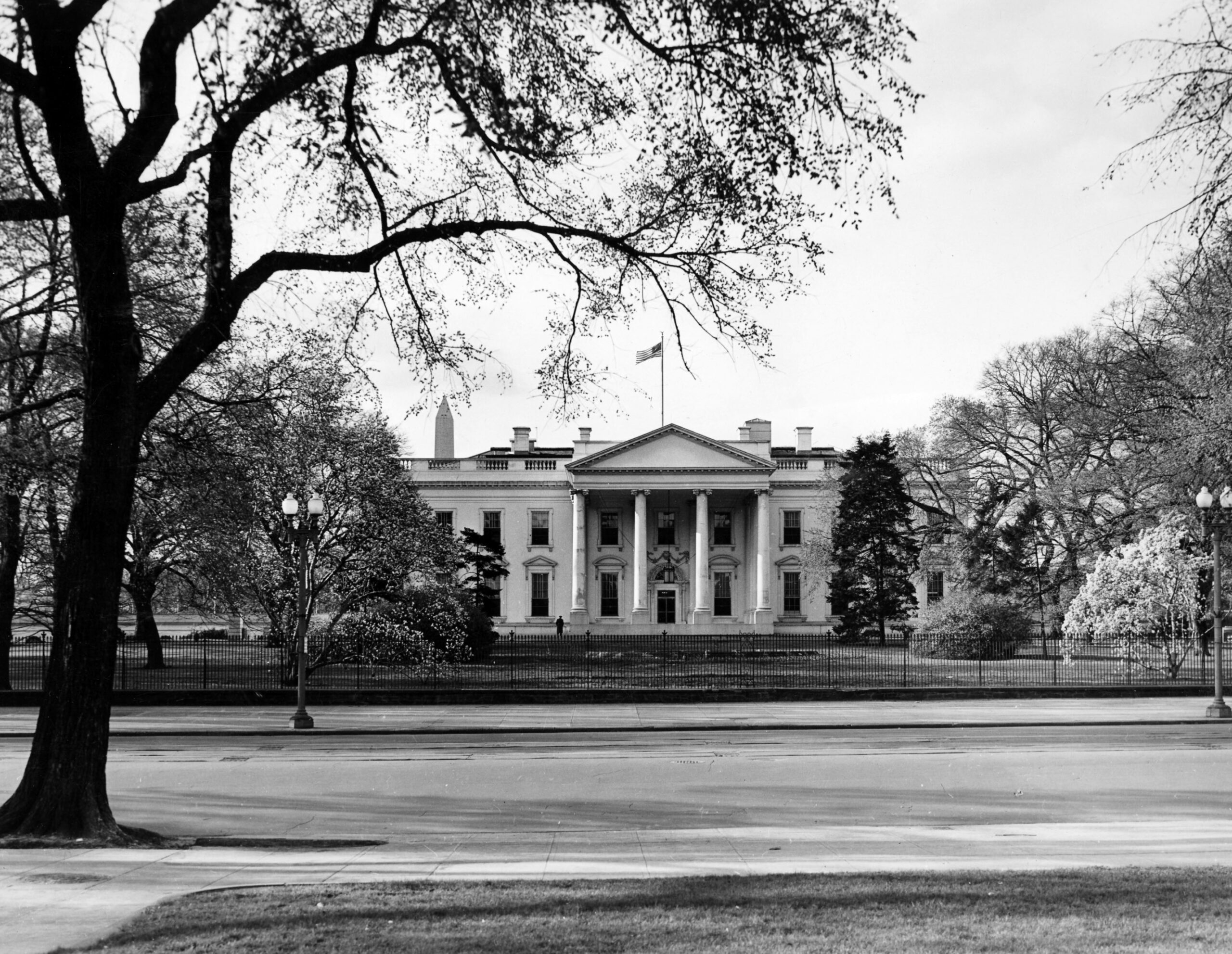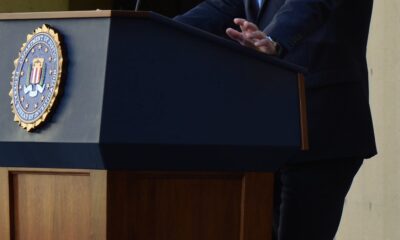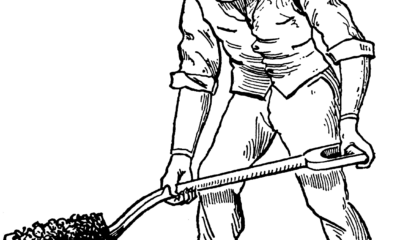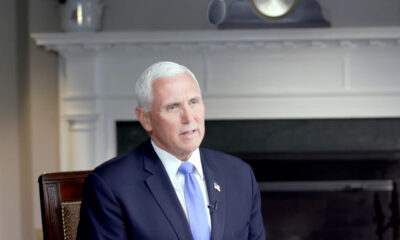First Amendment
Trump Press Secretary Fields Questions From Packed Briefing Room
The new press secretary for Donald Trump proved more than a match for carping, often dishonest questions from legacy reporters.

The temperature was rising before the cameras started rolling. Reporters with assigned seating jealously guarded against the occasional poachers who were inevitably but politely evicted and sent scrounging for a spot to squeeze into along the already crowded aisles.
Press Secretary Karoline Leavitt – new face in the hottest club in Washington
Welcome to the hottest club in Washington: the White House briefing room.
It has everything: breaking news, minor press celebrities recognizable from their profile pictures on the social media website formerly known as Twitter, and behind the podium, the new spokeswoman for President Donald Trump, Karoline Leavitt. It functioned like a convection oven.
But other than the actual atmosphere, the first press conference of the second Trump season was relatively cool and calm. “President Trump is back, and the golden age of America has most definitely begun,” declared the press secretary. News followed quickly after Leavitt plugged the ongoing deportation operation, as twin screens behind her flashed the mugshots of recently arrested illegal immigrants convicted of violent crimes or suspected of terrorism.
Reporters with prepared questions waited anxiously for her to finish. She made them wait through two announcements.
The unidentified drones that caused widespread panic along the eastern seaboard last year were not unidentified; they were operating with authorization from the Federal Aviation Administration all along. “This was not the enemy,” Leavitt said.
Reforms for admittance to the White House Press Corps
And then the answer to another mystery: How would this White House shake up the clubby briefing room? Trump has never hidden his disdain for the press corps, and rumors abounded as reporters on the beat whispered about the possibility of sweeping changes. On Tuesday, Leavitt revealed a handful of new reforms. Dozens of outlets who had their press privileges revoked during the Biden administration would be restored. Independent journalists, podcasters, and social media influencers are invited to join the ranks of their corporate, ink-stained colleagues. And most notably, the handful of seats previously reserved for White House staffers would now go to the new media.
“As long as you are creating news content of the day and are a legitimate independent journalist,” Leavitt told the assembled press, “you are welcome to cover this White House.”
New media in this context included two well-known Beltway reporters, Mike Allen of Axios and Breitbart’s Matt Boyle. They asked about AI and access to the White House, respectively. Another 47 minutes of questions followed as the press secretary called on nearly two dozen other journalists in a familiar routine.
Hands went up. Multiple voices shouted. One by one, reporters were called on by name. Leavitt answered each of them, but notably, she did not use notes or read from a “briefing book,” the normally Bible-sized compendium of prepared talking points that accompanied each of her predecessors at the podium.
A young face
Leavitt is the youngest press secretary in American history and something of a new development. Unlike the other Republican officials who held her role in the first Trump administration after other previous posts in politics, with the exception perhaps of Kayleigh McEnany, who was the fourth and final press secretary, she is not a MAGA convert. Her career started, instead, as an assistant press secretary in the first Trump White House. This makes Leavitt fluent in Trumpism.
Zeke Miller of the Associated Press, the outlet that traditionally receives the first question, but this time went third during this briefing, asked whether Leavitt saw her role as purely an advocate for the president or whether she would provide “the unvarnished truth.” Replied the new press secretary, “I commit to telling the truth from this podium every single day.”
“But,” Leavitt continued, striking a tone that was less confrontational than business-like, “we ask that all of you hold yourselves to that same standard.”
“We know for a fact there have been lies that have been pushed by many legacy media outlets in this country about this president, about his family. And we will not accept that. We will call you out when we feel that your reporting is wrong or there is misinformation about this White House,” she continued. “So, yes, I will hold myself to the truth, and I expect everyone in this room to do the same.”
Her predecessors as press secretary
The briefings during the first Trump administration were often brawls where GOP press secretaries gave barbs as good as they got. In fact, heated confrontations have been common since Richard Nixon remodeled the swimming pool in the West Wing into a permanent workplace for the press. But the daily briefing eventually went dark during the first Trump term because, as the president alleged at the time, the press “will never cover us fairly.” The practice only resumed during the pandemic when the White House COVID task force delivered daily updates about the virus.
The first Leavitt briefing was not without fireworks. When Peter Alexander of NBC News questioned whether the president was shifting emphasis from deporting violent criminals to illegal immigrants across the board, the newly minted press secretary fired back after an extended back-and-forth, “If you are an individual, a foreign national who illegally enters the United States of America, you are by definition a criminal, and so, therefore, you are subject to deportation.”
Good performance reviews
The reviews were glowing from the right and from within the administration. Vice President J.D. Vance wrote on social media that Leavitt “killed it up there,” and a senior White House official summed up the mood in the West Wing, telling RealClearPolitics that the new press secretary was receiving “universal acclaim” behind closed doors.
The role remains a bit uncertain, all the same, in a White House with an incredibly accessible president. Trump invited reporters into the Oval Office on his first day back in office for an extended gaggle, and he regularly stops outside events and on his way to Marine One to field questions. Aboard Air Force One on his way to California to survey wildfire damage, he passed some of the time in the tail of the plane with the press taking questions. Given that accessibility, what will the frequency of the briefings be?
Will the daily briefing, in fact, be daily? “The president is the best spokesperson that this White House has,” Leavitt told RCP. “And I can assure you that you will be hearing from both him and me as much as possible.”
This article was originally published by RealClearPolitics and made available via RealClearWire.
Philip Wegmann is White House Correspondent for Real Clear Politics. He previously wrote for The Washington Examiner and has done investigative reporting on congressional corruption and institutional malfeasance.
-

 Civilization4 days ago
Civilization4 days agoDC Pipe Bomb Arrest Raises Questions About Christopher’s Wray’s FBI
-

 Civilization5 days ago
Civilization5 days agoThe Legal Logic Behind U.S. Operations Against Narco-Terrorist Networks
-

 Executive5 days ago
Executive5 days agoNewsom’s ‘National Model’ for Homeless Wracked by Fraud
-

 Executive4 days ago
Executive4 days agoWhen You’re in a Hole, Stop Digging
-

 Education3 days ago
Education3 days agoWaste of the Day: Taxpayers Subsidize Football Coach Severance
-

 Executive2 days ago
Executive2 days agoWaste of the Day: Obamacare Failed Test, Approved Fraudulent Subsidies
-

 Civilization3 days ago
Civilization3 days agoPence Calls on Trump To Fire RFK Jr Over Abortion Drug
-

 Executive4 days ago
Executive4 days agoWaste of the Day: Feds Pay Nonprofits That Sue the Government








